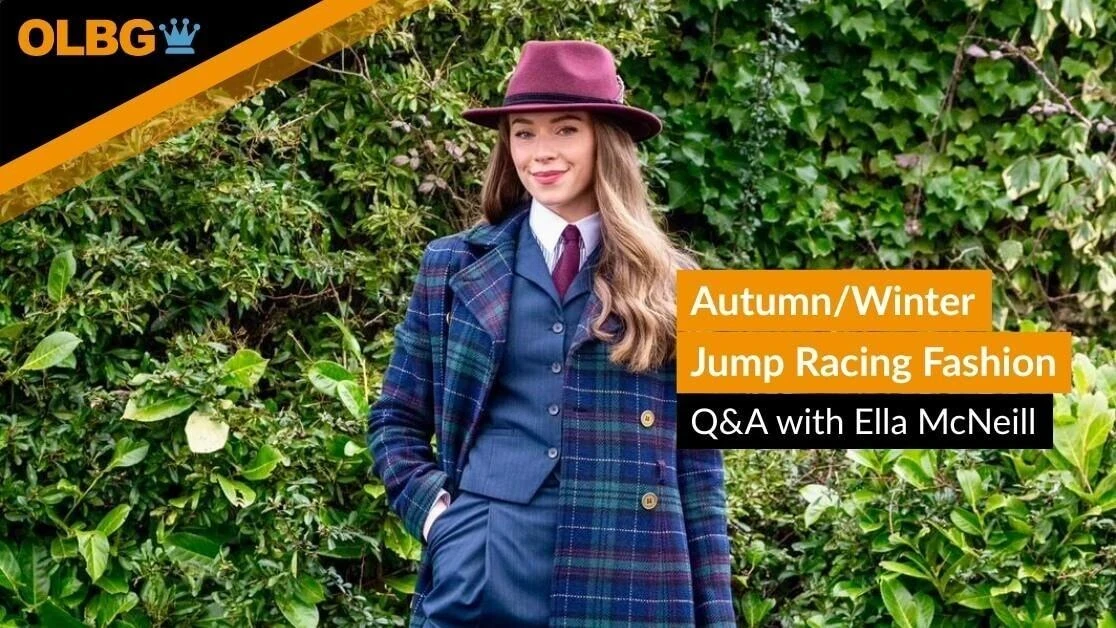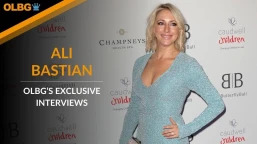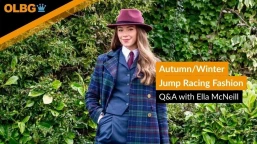
I've spent over 20 years inside the betting industry. I'll guide you to avoid the hype, ignore the noise, and steer clear of the common pitfalls that catch out everyday punters.
With the Jump racing season in full swing, OLBG Racing has teamed up with brand ambassador and fashion expert Ella McNeill to share her top tips on how to master race day style during the colder months. From cosy layers to statement coats, Ella reveals how to look effortlessly chic while staying warm and dry at the track.
Whether you’re heading to Cheltenham, Aintree, or your local meet, Ella’s advice covers everything from choosing the right fabrics and colours to styling classic tweed and tartan in fresh, modern ways. She also highlights how tailoring, statement hats, and smart layering can elevate your look without sacrificing comfort.
This season’s key trends? Expect tweed, tartan, and rich autumnal tones to dominate the paddock, as British racing style embraces heritage fabrics with a contemporary twist.
Q: What are the key fashion trends you predict we’ll see at the races during the 2025/26 jump season?
There’s a big difference between flat and jump racing in England because of the weather, which really affects how people dress. The base layer of fashion at jump meetings tends to stay consistent year after year - lots of muted tones, rich textures, and warm fabrics.
The main thing to pay attention to this season is fabric. You want something warm but stylish, and brands are doing great things with materials like tweed. Tweed has become more popular than ever, and I think it’ll be even more dominant this season.
I was recently speaking to a stylist friend of mine, and she mentioned that Scottish fashion is also having a real moment. Tartan has been seen everywhere on the catwalks, so expect to see even more of it at racecourses this winter. It’s also the 100th anniversary of Chanel arriving in Britain, and they’ve been celebrating tweed in their collections - so that influence will definitely filter through.
The new Downton Abbey film that came out in September could also inspire racing fashion. The costumes had that 1930s opulence we associate with racing style, and I think we’ll see a revival of that elegant, vintage look this season.
Something else worth noting is ties for women. We’ve seen more women leaning into ties and tailoring, and a tie can be such a cool way to elevate a look. Tailoring is another great option - a sharp suit or a well-cut coat always works beautifully for jump racing.
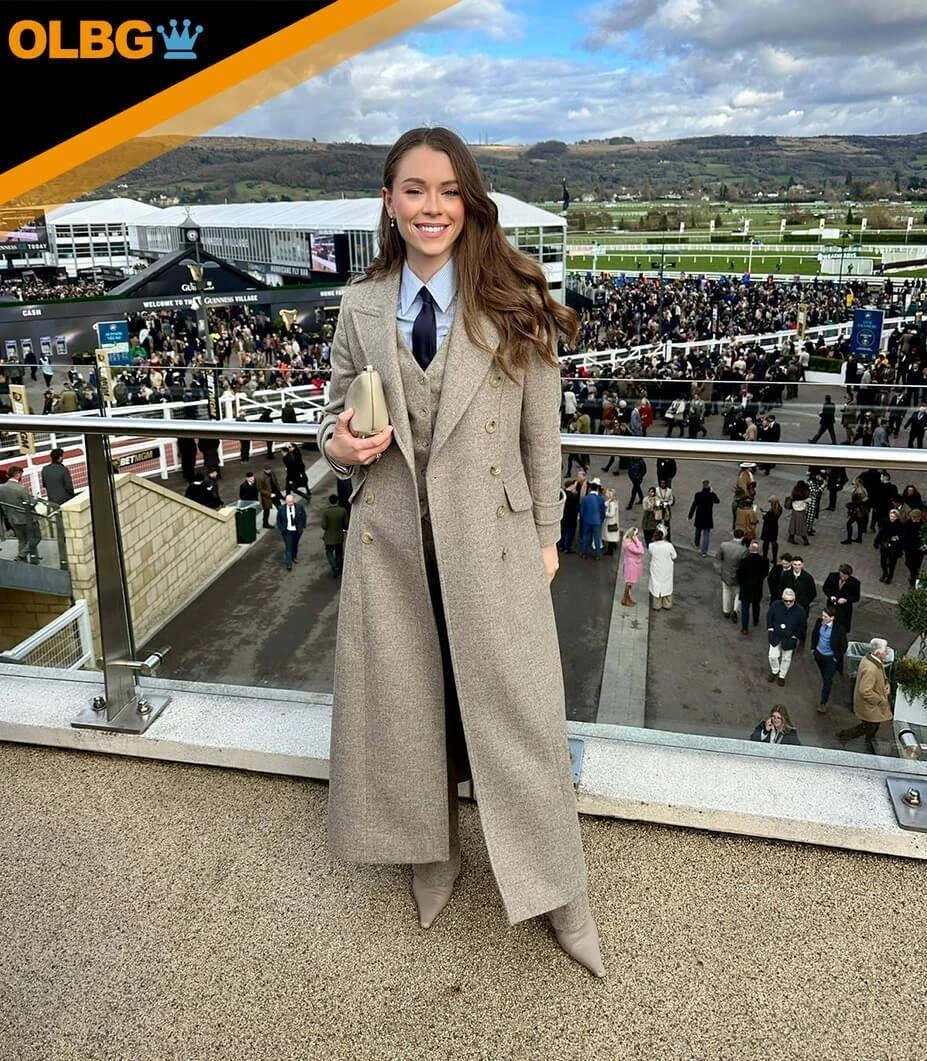
Q: How does jump racing style differ from the flat racing season, like at Ascot in summer?
The main difference is definitely fabric. In summer, it’s all about light, breathable materials and bright colours, while in the jump season you need practicality - warmth, comfort, and something that still looks chic.
A statement coat is key. If you can find one that’s both warm and stylish, you’re winning. Winter racing is all about balancing elegance with practicality. You don’t have to think about staying warm or dry in summer, but you absolutely do in the jump season.
That said, I love both seasons for different reasons. Autumn and winter bring those deep, rich fabrics and colours - the tweeds, the earthy tones and that’s always something to look forward to.
Q: Are there any standout colours or patterns you expect to dominate this season?
Tartan will be huge, along with tweed and bouclé. Bouclé is becoming really popular because it’s warm and textured - perfect for the season.
Colour-wise, it’s the classic autumnal palette: burgundy, oxblood, navy, greens, and browns. Even though they’re more muted, when styled right they look really chic. Those rich tones just suit winter racing so well.
Q: What’s one item you’d tell people not to wear to the races this season?
I’d always advise people to wear what they’d like and are most comfortable in. That being said, i’d say avoid open-toe shoes. The weather is unpredictable, and cold or wet feet will ruin your day. Go for closed-toe styles - boots, loafers, or a smart flat. Keep your toes covered and leave the strappy heels for summer.
Q: Is there a particular celebrity or influencer trend that might influence racegoer style this year?
Holland Cooper has been a real pioneer of British racing fashion for nearly a decade now. Holland Cooper transformed the way people dress for the races - the brand made country style fashionable and practical.
Their collections have evolved massively from the early days of tartan mini skirts and capes, but they’ve stayed true to that luxury equestrian feel. Jade herself is always impeccably dressed, and I think she continues to influence how women approach winter race day dressing.
Lydia Millen is another name that comes to mind. She’s done collaborations with both Holland Cooper and Fairfax & Favor, and she always nails that effortless transition from summer to winter style. Taking inspiration from her wardrobe is never a bad idea.
Q: Which three designers should people look out for this season?
For investment pieces, Holland Cooper and Fairfax & Favor are my go-tos. They’re British-made, the quality is amazing, and their pieces last for years.
On the high street, COS, Massimo Dutti, and & Other Stories are killing it right now. & Other Stories especially has been putting out some brilliant pieces - their design team deserves credit. Their coats and cashmere blends are great quality and really affordable.
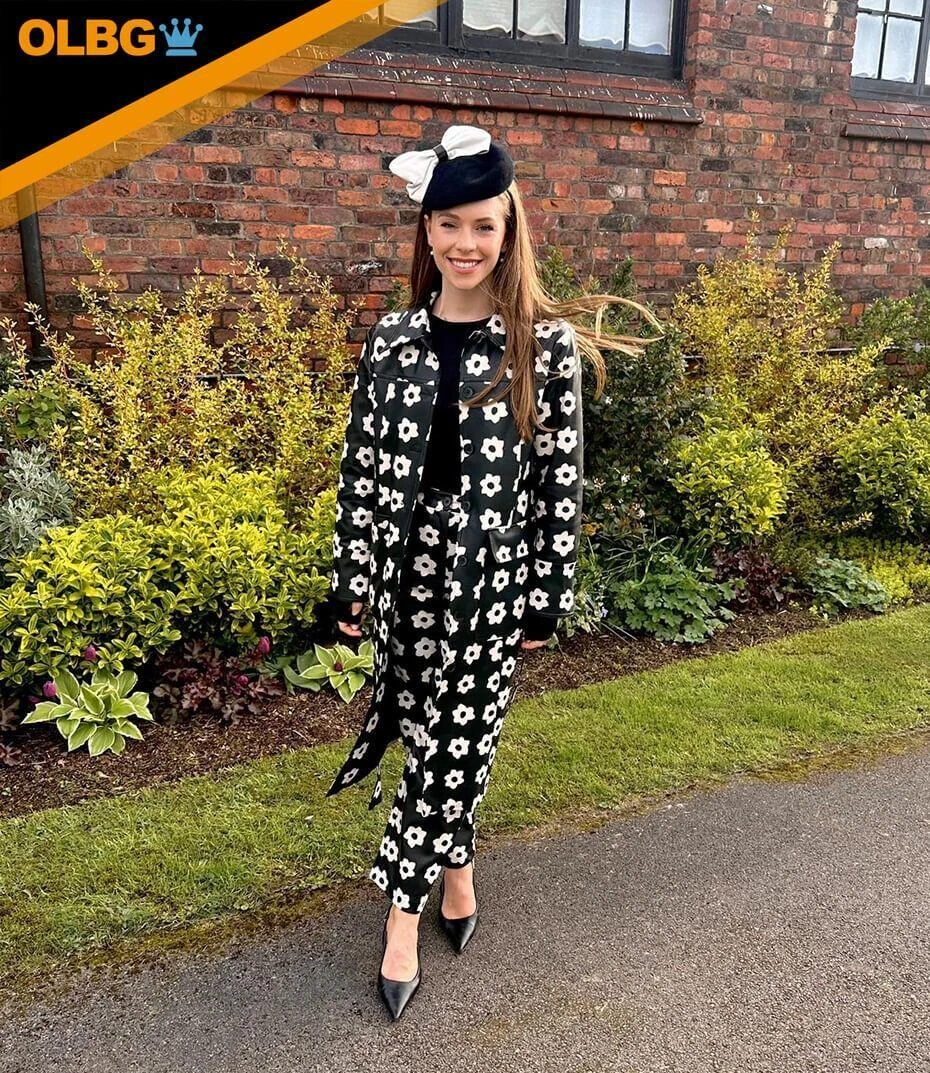
Q: How can people balance looking chic while also being prepared for mud, rain, and chilly winds?
Base layers are your best friend. Thin thermals from places like & Other Stories or Uniqlo are perfect - they fit under anything and no one will know you’re wearing them.
Hand warmers are a game changer too. Pop them in your gloves or pockets for extra warmth. Footwear is also key - a good boot or block heel works best. And invest in a proper coat that’s warm, waterproof, and stylish.
Q: How can racegoers use layering to stay warm without looking bulky?
Good thermals are essential. In winter, most of your outfit is covered anyway, so you can hide layers easily.
Make your outer layer the statement - a beautiful coat or tailored jacket can pull the look together. Underneath, keep it simple and warm. The coat should be the hero of your outfit.
Q: Are there particular coat or jacket styles that work especially well for the races?
A long, tailored coat in a thick, lined fabric always looks elegant. I love ankle-length silhouettes - they’re timeless and flattering.
Neutral tones work best because they go with everything, and you can wear them beyond the races too. Pair one with jeans and boots for everyday or dress it up for race day. A good coat is always worth investing in.
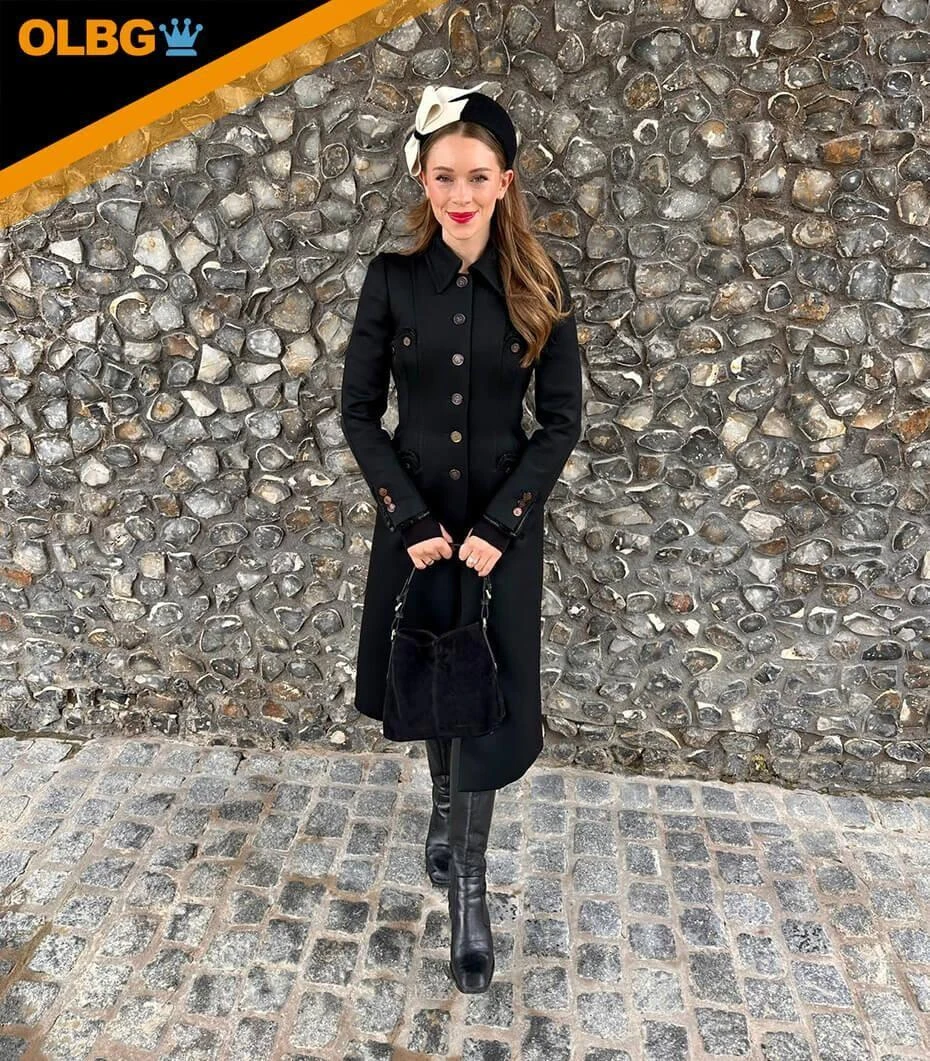
Q: Hats and headpieces are race day staples. Which styles work best in winter?
Hats are such a fun way to finish an outfit, especially in winter. Fedoras are always a safe bet - they’re stylish, practical, and keep you warm.
Pillbox hats are also making a comeback. We saw them in summer, but they translate really well into winter when made from felt or textured fabrics. Pamela Anderson was recently seen in one, and they’ve been popping up more at the races too.
Even a headband or smaller headpiece can work, as long as it’s in a heavier, winter-appropriate fabric.
Q: Do you have any advice for men dressing during the autumn-winter months?
Layering is key. A base layer, shirt, waistcoat, jacket, and coat - it’s easy for men to layer well while still looking sharp.
A good quality coat is essential. Go for something classic that’ll last for years. Tweed and patterned fabrics are great for winter racing, and accessories like scarves or hats add personality.
In summer, men wear lighter fabrics like linen, but in winter it’s all about heavier materials and darker tones. Add a scarf or a flat cap to finish the look.
Q: Finally, what are the most common mistakes people make when dressing for the races in cold or wet conditions?
Not being practical. It’s so easy to plan an outfit for mild weather, only for the temperature to drop, and then you’re freezing all day.
Always overdress slightly - you can take layers off if it warms up, but you can’t magic up extra warmth once you’re cold.
Avoid lightweight fabrics, wear tights, and be realistic about the weather. It’s better to be too warm than too cold at the races.
